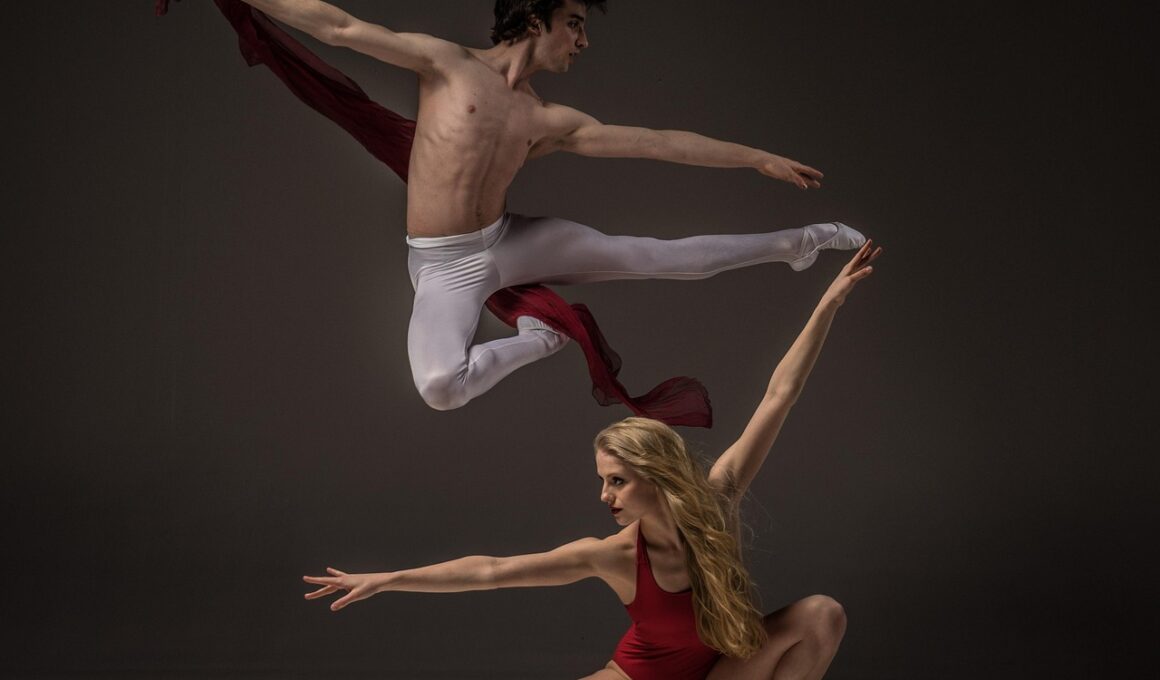The Science Behind Balance and Coordination in Sports
Balance and coordination are essential components of athletic performance. They enable athletes to maintain control and stability during various movements during games and practices. Balance refers to the ability to maintain a controlled body position whether stationary or in motion, while coordination involves the efficient and effective execution of tasks requiring multiple body parts. Sports require these skills as athletes often perform at high speeds and in demanding conditions. Enhancing balance and coordination can lead to improved performance, fewer injuries, and a greater physical fitness experience. Athletes participate in specific exercises designed to improve these skills, which often incorporate balance boards, agility drills, and yoga practices. These training methods focus on the body’s core, legs, and arms, developing the necessary muscle memory for optimal movement efficiency. Incorporating these aspects into everyday training helps athletes move smoothly during competition. The scientific study of proprioception further enhances our understanding of how balance and coordination work. Proprioception is the body’s ability to sense its position in space, crucial for any sport-specific movements. Strengthening the connections between the mind and body results in enhanced athletic performance.
Importance of Balance and Coordination in Various Sports
Balance and coordination are crucial in sports like gymnastics, football, and basketball. Each sport demands different levels of these skills to perform successfully and avoid injury during competition. In gymnastics, athletes must demonstrate extraordinary balance as they perform routines on beams or mats. Skills like executing flips and landing correctly require impeccable coordination and body awareness. Similarly, in football, players must maintain balance while performing complex footwork under pressure. The ability to quickly adapt to dynamic environments also contributes to a player’s overall effectiveness. Basketball players heavily rely on coordination for dribbling, shooting, and defending effectively. Mastery of these skills allows an athlete to move fluidly while navigating opponents. In track and field, sprinters and long-distance runners exhibit the importance of bodily balance to achieve maximum stride length and pace. Coordination in this space means synchronizing arm and leg movements for optimal gait efficiency. Coaches often emphasize targeted training techniques tailored to the sport’s demands to enhance these skills. Utilizing drills and exercises teaches athletes to apply balance and coordination directly relating to their sport, ensuring consistency and performance enhancement.
To effectively enhance balance and coordination, athletes must engage in structured training regimens. These training methods include using tools such as stability balls, balance pads, and stability discs. These elements challenge the athlete’s proprioceptive system and require them to stabilize their bodies differently. Many exercises focus on core strengthening, which is vital for overall balance. A strong core assists in maintaining proper posture and body alignment, providing the foundation for coordination. Plyometric exercises have proven effective, particularly those that require rapid changes in motion or direction. Agility ladders and cones can improve footwork, making transitions smoother during play. Integrating reaction drills into training fosters quicker response times, crucial in competitive sports. For example, basketball players need to anticipate moves from opponents quickly and adjust footwork accordingly. Resistance training can enhance strength and stability, allowing athletes to control body movements with greater ease. Proper warm-up routines also prepare the body for training, reducing the risk of injury. Elevating the heart rate and engaging specific muscle groups primes athletes for balance and coordination drills. Completing these exercises consistently can lead to notable improvements across sports disciplines.
Scientific Insights into Balance and Coordination Development
Understanding the scientific background of balance and coordination can help both athletes and coaches implement effective training strategies. The vestibular system in the inner ear plays a significant role in maintaining balance. It sends signals to the brain about body position and movement. Problems with this complex system can lead to difficulty in executing controlled movements, resulting in injuries. Training to improve balance also strengthens neuromuscular connections. These connections refer to the communication pathways between the nervous system and muscles, crucial for coordinated movement. Research has shown that strength training can enhance these pathways, leading to better performance. Incorporating specific balance exercises, like single-leg stands or dynamic reaches, stimulates these connections and builds stability. Visual feedback mechanisms are also significant in developing coordination. Athletes often use mirrors or video recordings to analyze their movements and adjust according to what they observe. These techniques allow for increased body awareness and help in correcting postural errors. Scientific studies continue to explore balance and coordination’s dynamics, revealing new methodologies for improving athletic performance, enhancing training regimens, and fostering injury prevention strategies.
The integration of technology in training balance and coordination has become increasingly popular in modern sports. Wearable devices, such as fitness trackers and smart shoes, can assess an athlete’s balance capabilities and track their progress over time. These devices monitor movement patterns, providing critical feedback during training sessions. Virtual reality systems are also gaining traction, offering immersive environments for athletes to practice their skills without physical limits. Such environments simulate various scenarios that challenge balance and coordination, helping athletes to prepare for competition. Incorporating technology allows for tailored workouts that adapt to each athlete’s unique needs. Athletes can set specific goals and track their improvement in real time. Furthermore, online platforms provide access to professional coaching, allowing athletes to follow structured training guides at their convenience. Engaging with mobile applications designed for balance training offers fun yet effective methods to enhance performance. Engaging with peers in virtual training sessions can provide motivation and accountability. These methods emphasize the importance of consistency and dedication in developing these skills over time. Technology continues revolutionizing the training landscape, empowering athletes to reach new heights in performance.
Practical Applications in Sports Training
Applying balance and coordination skills is essential in creating effective training regimens for athletes. Coaches can design specific drills that target these areas, ensuring athletes develop competence. For instance, agility drills help enhance both balance and coordination through rapid changes in direction. Cone drills and shuttle runs can help athletes become faster while maintaining control. Additionally, sport-specific movements should be practiced regularly, focusing on situational responses that incorporate balance. Team sports often require players to execute skillful maneuvers under pressure, necessitating a strong foundation in these areas. Strength-based exercises are essential for reinforcing core stability, as they enable athletes to maintain posture during play. Integration of field training with functional movements assists in simulating real-game conditions. Unilateral exercises, which engage one side of the body at a time, can enhance imbalances and promote equal strength development. Lastly, stretching and mobility routines that focus on flexibility can aid balance. Incorporating these practices ensures a well-rounded approach, addressing every aspect of athletic performance. Structured training programs help athletes develop stronger balance and coordination, boosting their overall efficiency and effectiveness in competition.
In conclusion, balance and coordination play an integral role in athletic performance across various sports. Understanding the science behind these skills can help individuals optimize their training methods for success. By implementing structured programs that target these areas, athletes can experience significant improvements in their abilities. From improving body awareness to refining muscle coordination, the benefits of focused training are profound. Incorporating both physical and technological elements into training routines ensures adaptability and engagement. Athletes need encouragement and support from coaches to embrace these challenges and foster skill development. Continuous practice and a commitment to enhancing balance and coordination can lead to a remarkable difference in overall athletic capability. Coaches can assess performances and provide constructive feedback, allowing athletes to refine their techniques further. The advantages gained from effective balance and coordination training ripple throughout all aspects of sports. Consequently, athletes can enjoy their sports more while minimizing the risk of injury. Future research continues to inform and refine our understanding of how best to train athletes in these vital areas, ensuring continuous progress and development in sports performance.
Ultimately, developing balance and coordination takes time, dedication, and practice. Through targeted training regimens and a commitment to improvement, athletes can enhance these foundational skills. Coaches, trainers, and athletes should collaborate to set clear goals and regularly assess progress. Engage in cross-training techniques that challenge the body in different ways, enhancing adaptability and functional strength. By incorporating balance and coordination exercises into routine workouts, athletes can create a well-rounded foundation for their athletic pursuits. As athletes improve in these two crucial aspects, they will be better equipped to handle complex movements and challenges during competition, recognizing the value of focus and discipline. Moreover, peer support during training can foster a beneficial atmosphere, enhancing motivation and promoting healthy competition. Establishing daily or weekly practices focused on balance can lead to increased awareness and improved overall athletic performance. In the long run, taking the time to work on these skills will pay off in competition and personal growth, enriching the overall athletic journey. By prioritizing balance and coordination in sports training, athletes can achieve their goals while experiencing the broader benefits of these essential skills.


